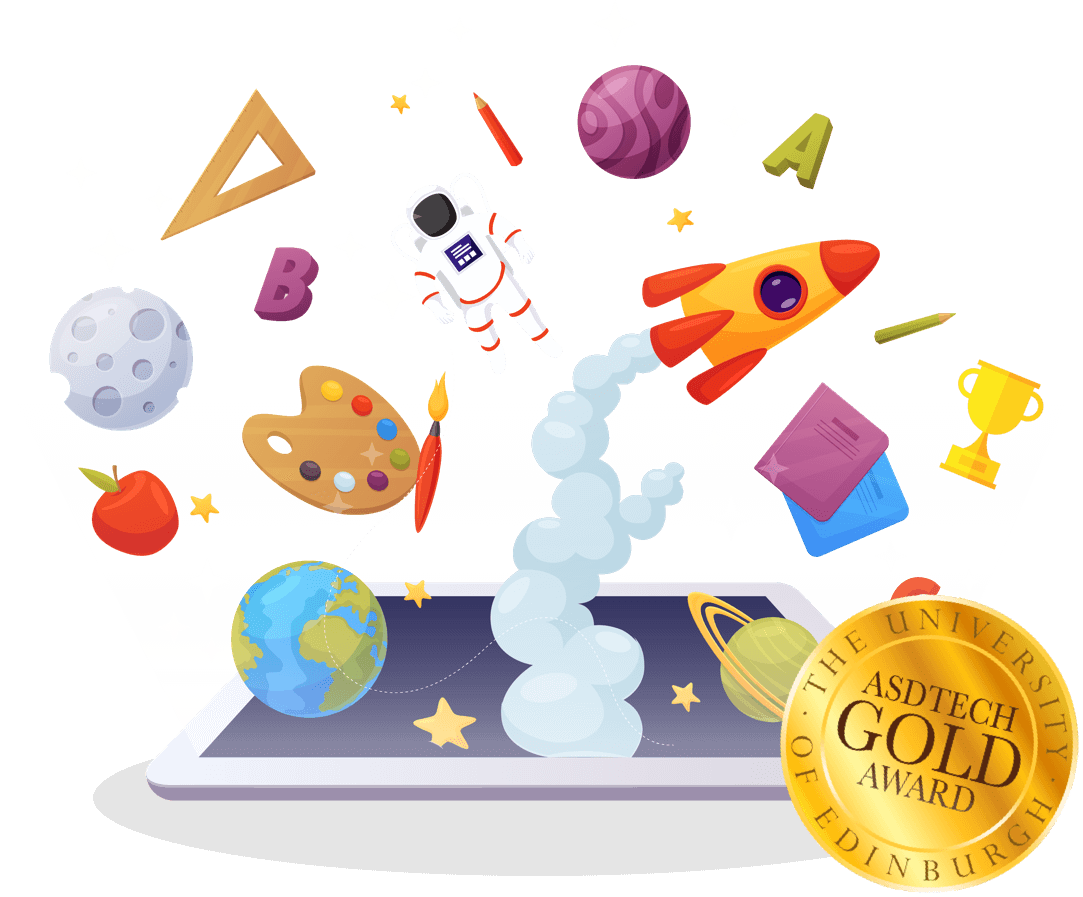For many conditions and disorders, it is easy to find the first point where they were initially described to this day. Their diagnostics criteria are clear. However, this has not been the case for autism. There have been several diagnoses in the past five decades, and they were less direct with several branching out.
In this article, we will talk about how autism diagnosis came to be, who contributed to what, and where we are today.
When Was Autism First Diagnosed?
Autism had a lot of descriptions in the past decades. It was first thought of as a form of childhood schizophrenia. There was even a time where the disorder was thought to stem from cold parenting.
Throughout the years, the diagnostic criteria and the description of autism changed in the Diagnostic and Statistical Manual of Mental Disorders (DSM) in its editions. This manual is used in the United States to guide physicians in their diagnoses, and it gives us a great idea about how autism diagnosis changed over the years.
An Austrian-American psychiatrist and physician, Leo Kanner first described autism in 1943 . In his article, he mentioned children with delayed echolalia as well as how they wanted to maintain sameness in their lives. He also wrote that these children were also gifted in terms of intelligence and they had an extraordinary memory.
This led Leo Kanner to consider autism a psychiatric condition. Kanner observed autism as an emotional disturbance rather than a developmental or cognitive one. In light of this information, the second edition of the DSM, DSM-II, was published in 1952 with the definition of autism as a psychiatric condition. The manual deemed autism a form of childhood schizophrenia . It was characterized by ”atypical and withdrawn behavior,” ”general unevenness, gross immaturity and inadequacy in development,” and ”failure to develop identity separate from the mother’s.”
This idea of autism as a form of childhood schizophrenia marked by a detachment from reality continued into the 1950s and 1960s, where the cause of autism was thought to be cold mothers. Bruno Bettelheim , an Austrian-born psychologist, used the term ”refrigerator mothers” to describe this cold and unemotional mother theory. However, with findings of biological underpinnings from the twin studies done in the 1970s, this theory was disproved, much like most of Bettelheim’s works after his death. Around that time, it was discovered that there is a genetic etiology as well as some environmental factors contributing to autism.
In the 1970s, various studies and research suggested that autism was actually rooted in brain development. Later in 1980, the third edition of the DSM, DSM-III, described autism as a ”pervasive developmental disorder” that is separate from schizophrenia and established it as a separate diagnosis. Before DSM-III, many aspects of autism diagnosis were left to the clinician’s interpretations, so there were no specific criteria. However, DSM-III, listed specific criteria that are necessary for an autism diagnosis. In DSM-III, there were three essential characteristics of autism that needed to be observed in the patient. These were severe impairment in communication, lack of interest in people, and bizarre responses to the environment. These features would have to develop within the first 30 months of the life of the patient. So, autism was recognized as a developmental disorder.
The change in autism diagnosis did not stop there. The DSM-III was revised in 1987, where autism criteria were significantly altered in many aspects. With this revision, autism now had a broader concept as pervasive developmental disorder-not otherwise specified (PDD-NOS) was added for ”mild autism”. Also, the 30-month requirement was removed. The manual did not use the term ”spectrum”, but the definition of autism started to become one more and more. This change actually pointed to the fact that researchers of autism had a growing understanding that autism is not a single condition, but a spectrum of conditions.
In the revised manual, 16 criteria were listed and 8 of these had to be met in order to get a diagnosis. Clinicians were able to include children who did not entirely meet the criteria for autism but were deemed to require developmental or behavioral support because PDD-NOS was added in the manual.
Autism was first officially identified as a spectrum disorder in the DSM-IV published in 1994 and revised in 2000. In this edition, five conditions with distinct features were listed, and in addition to autism and PDD-NOS, this edition also added Asperger’s syndrome to the diagnosis. Hans Asperger , an Austrian child psychologist, published the first description of the syndrome in 1944 for children who displayed restricted and repetitive behaviors and were unable to hold conversations in relation to that. In the 1994 version of the DSM, Asperger syndrome was characterized differently than the autistic disorder in that its diagnosis lacked significant delay in language and cognition.
This edition of the DSM also included Rett syndrome, where movement and communication are affected, as well as the childhood disintegrative disorder (CDD), where there is a severe reversal in development. The inclusion of these also indicated that now more research hypotheses supported that the roots of autism were in genetics.
For decades, throughout the 1990s, many studies were done to specifically identify the genes that contribute to autism. Many genes found to be linked to the disorder, however, not one of them was exclusively related to autism. That is why experts decided to make autism an umbrella diagnosis with a spectrum ranging from mild to severe. Around these times, clinicians did not have a consistent approach to diagnosis of autism. It was possible to get two different diagnoses of Asperger syndrome or PDD-NOS for the same condition. To this end, in the DSM-5, the term ”autism spectrum disorder” was finally introduced to prevent the lack of consistency.
There are two groups of features for the diagnosis: ”persistent impairment in reciprocal social communication and social interaction” and ”restricted and repetitive patterns of behavior”. These characteristics both present in early childhood and each group includes specific behaviors. Clinicians have to identify a certain number of these specific behaviors to make a diagnosis. In this version of the DSM, Asperger syndrome, PDD-NOS and classic autism were all eliminated.
Come along with 200k+ families!
Explore the endless possibilities of learning!
Download for Free.
History of Autism: Timeline and Diagnosis
Autism diagnosis has changed drastically over the years. Today, the DSM-5 describes the condition as autism spectrum disorder. Here is a timeline of events that lead to this diagnosis.
1911: Eugen Bleuler , a Swiss psychiatrist, was the first person to use the term autism to refer to a group of symptoms related to schizophrenia. The word autism comes from the Greek word ”autos”, which means ”self”.
1926: In a scientific German psychiatry and neurology journal , a child psychiatrist from Kiev, Russia, Grunya Sukhareva, wrote about six children with autistic traits.
1943: Leo Kanner, Austrian-American psychiatrist, published a paper about 11 children with high intelligence but who displayed a desire for aloneness and obsessive insistence on sameness. He later described their condition as early infantile autism.
1944: Hans Asperger, an Austrian pediatrician, described a ”milder” form of autism, which is known as Asperger’s Syndrome. He reported cases where the patients were all boys and had high intelligence but had problems in social interactions.
1967: Bruno Bettelheim, an Austrian-born psychologist, popularized the theory that autism was the result of cold and inattentive mothers, coining the term ”refrigerator mothers”. This theory has been debunked solidly. At this time, researchers did not consider the biology or genetics involved, but only looked at the impact of life experiences.
1977: A twin research found some genetic and biological differences in brain development involved with autism.
1980: For the first time, ”infantile autism” is listed in the Diagnostic and Statistical Manual of Mental Disorders III (DSM-III). To this end, it was differentiated from the diagnosis of childhood schizophrenia.
1987: The DSM now calls the condition ”autism disorder” instead of ”infantile autism”, which is a much more expansive definition. The manual also included a checklist for diagnostic criteria in order to eliminate the lack of consistency between diagnoses made by clinicians.
1990: Autism is included to be a special education as a disability category in the Individuals with Disabilities Education Act (IDEA) . This made it easy for autistic children to get special education services.
1994: Asperger syndrome is added to the DSM as an addition to the autism spectrum in order to represent milder cases where the patients tend to be high functioning.
1996: Dr. Temple Grandin , an American scientist and animal behaviorist, wrote Emergence - Labeled Autistic, which described her life with autism.
1998: A study was published in The Lancet that was later retracted suggesting that the measles-mumps-rubella (MMR) vaccine caused autism. Later on, many other studies quickly debunked this theory and the article was retracted, however, the idea that vaccines cause autism is still somewhat of a popular misconception.
1999: The Autism Awareness Puzzle Ribbon was adopted by the Autism Society as the universal sign of autism awareness.
2000: Related to the theory that MMR vaccines cause autism, vaccine manufacturers removed thimerosal , a mercury-based preservative that had been widely used as a preservative in various drug products like vaccines, due to the public fears about the vaccine causing autism, despite the fact that this theory has been debunked.
2009: The Centers for Disease Control and Prevention (CDC) in the United States estimated that 1 in 110 children had autism spectrum disorder. The previous statistics suggested in 2007, this rate was 1 in 150. However, the increase in the prevalence of autism was attributed by the CDC to the advancements in diagnostic and screening techniques.
2010: Andrew Wakefield, a British former physician and academic, who falsely claimed a link between the MMR and autism, lost his medical license and was barred from practicing medicine after his Lancet MMR autism paper was retracted.
2013: The DSM-5 gathered all of the condition subcategories under the umbrella diagnosis of autism spectrum disorder (ASD) and Asperger Syndrome is no longer a separate diagnosis. Autism Spectrum Disorder is now defined by two categories, namely the impaired social communication and restricted and repetitive behaviors.




